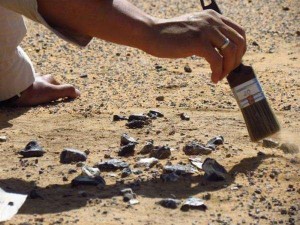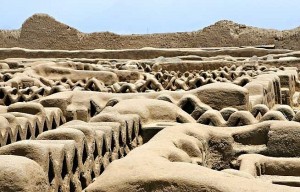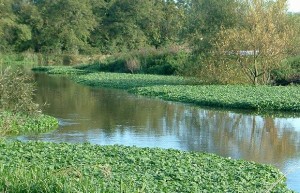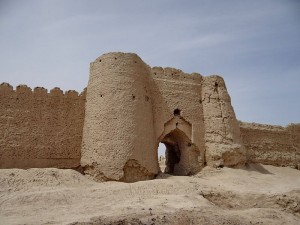 Polish archaeologists from the Institute of Archaeology and Ethnology in Poznań have discovered the remains of a settlement estimated to 70,000 years old during excavations in northern Sudan,. This find, according to the researchers, seems to contradict the previously held belief that the construction of permanent structures was associated with the so-called Great Exodus from Africa and occupation of the colder regions of Europe and Asia (as reported by http://www.archeosudan.org/).
Polish archaeologists from the Institute of Archaeology and Ethnology in Poznań have discovered the remains of a settlement estimated to 70,000 years old during excavations in northern Sudan,. This find, according to the researchers, seems to contradict the previously held belief that the construction of permanent structures was associated with the so-called Great Exodus from Africa and occupation of the colder regions of Europe and Asia (as reported by http://www.archeosudan.org/).
The site which is known as Affad 23, is currently the only one recorded in the Nile Valley which shows that early Homo sapiens built sizeable permanent structures, and had adapted well to the wetland environment. This new evidence points to a much more advanced level of human development and adaptation in Africa during the Middle Palaeolithic.
Another interesting project that researchers are also working on is a list of animal species that these early humans hunted. Despite the relatively simple flint tools produced using the Levallois technique; these humans were able to hunt large, dangerous mammals such as hippos, elephants and buffalo, as well as small, nimble monkeys and cane rats (large rodents that inhabited the wetlands). This year, the researchers intended to precisely date the time period in which the Palaeolithic hunters lived here, using optically stimulated luminescence.
The Polish team is working with scientists from Oxford Brookes University, who are helping to analyze the geological history of the area. The results will help determine climatic and environmental conditions that prevailed in the Central Nile Valley during the late Pleistocene and hope to identify factors that contributed to the excellent state of preservation at the Affad 23 site.
Excerpts with permission from Science and Scholarship in Poland, 70,000 year-old African settlement unearthed. Past Horizon, July 20, 2014. From http://www.pasthorizonspr.com/index.php/archives/07/2014/70000-year-old-african-settlement-unearthed
























